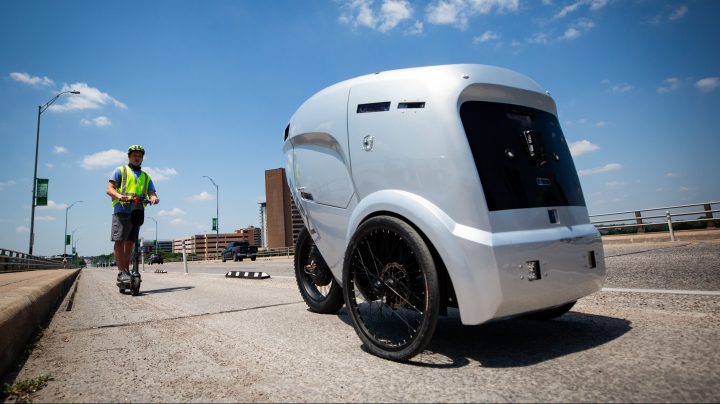
Robots have started to share the bike lane in Austin to deliver pizza
Robots have started to share the bike lane in Austin to deliver pizza

Austin, Texas, is one of the latest American cities where robots are now making deliveries — and competing with people for space on the road.
A fleet of 10 such robot vehicles, which look like futuristic ice cream carts, has started deliveries for the Austin chain Southside Flying Pizza.
The company behind the robots is Michigan-based Refraction AI, which has been operating in Ann Arbor since 2019. The company’s REV-1 robot can go up to 15 miles an hour with somebody monitoring journeys over the internet. For now, an attendant follows the robot on an electric scooter while the AI learns Austin’s streets.
“From an affordability perspective, that’s really about getting access to delivery for lots more people than have it today,” Refraction AI CEO Luke Schneider said. “We can expand the opportunities for restaurants and retailers, and that’s kind of what we’ve set out to do.”
The idea is that hiring one person to monitor multiple robots over the internet costs less than hiring a bunch of people to make deliveries by bike or car.
The REV-1 is modeled on a recumbent bike — with two wheels in the front and one in the back — which is why it uses the bicycle lane. Even though it’s supposed to yield to humans, some cyclists say they’re worried.
“My personal view is I don’t believe these belong in the bike lane,” said Jake Boone, an avid cyclist and a member of the city of Austin’s Bicycle Advisory Council. “I almost feel like we’re the test subjects for this new technology, and that does bother me.”
Other cyclists said they were fine with the tech.
“I think this is an experiment that is worth a shot,” said Chris Riley with the advocacy group Bike Austin, adding that more users in the bike lane — human or machine — could lead to more bicycle infrastructure down the road.
There’s a lot happening in the world. Through it all, Marketplace is here for you.
You rely on Marketplace to break down the world’s events and tell you how it affects you in a fact-based, approachable way. We rely on your financial support to keep making that possible.
Your donation today powers the independent journalism that you rely on. For just $5/month, you can help sustain Marketplace so we can keep reporting on the things that matter to you.

















